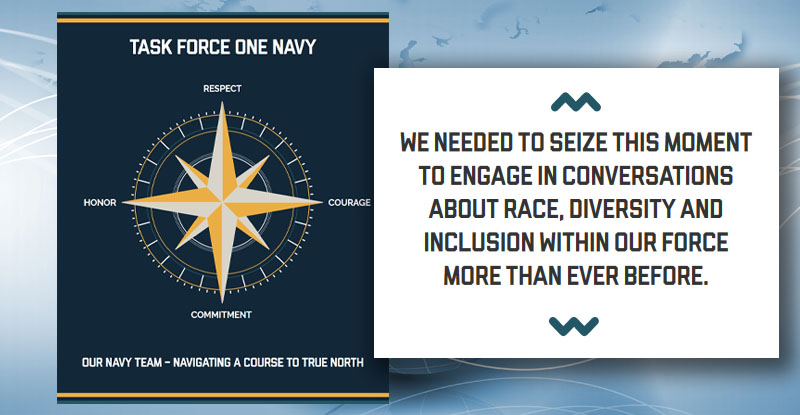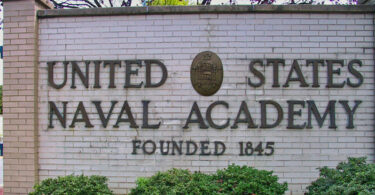By STARRS Member Brent Ramsey, Capt, USN (Ret)
In Part I, we raised questions about the Navy’s establishment of Task Force One Navy (TF1N) and whether that decision was based on sound rationale or was politically motivated. In this section, we will analyze the report itself.
The TF1N order is full of the language of Critical Race Theory (CRT) like “systemic racism,” “diversity,” “lived experience,” “inclusion” and “structural and interpersonal biases”. The order was issued 35 days after the beginning of a nation-wide convulsive reaction to the death of a single black man in Minneapolis at the hands of a police officer. Curiously, there is zero evidence that person’s unfortunate death had anything to do with race. The police officer was arrested, charged, tried, and convicted on criminal charges only. The officer was not charged with a hate crime.
Could the Navy be reacting to public events that have nothing to do with what is going on in the Navy and how the Navy recruits, trains, manages its personnel? The TF1N report was issued on 26 January 2021. The report has 56 recommendations which if implemented will fundamentally change the Navy by changing standards, arguably to lower levels, in order to have Navy officer demographics match national demographics. Will having a few thousand more Black and Hispanic officers make our Navy better and more capable to defeat enemies?
Within STARRS and within the Navy community at large concerns have been raised about how this initiative is going to impact readiness, recruiting, morale, and retention. The report appears to be the Navy’s wholesale endorsement of portions of Critical Race Theory (CRT). Our concern that the Navy is endorsing CRT is based on the fact that in their TF1N report they use the language of CRT as follows:
The word diversity appears 213 times, the word inclusion appears 135 times, the word equity appears 15 times and the word belonging appears 6 times. These terms are language of CRT.
The entire foundation of TF1N’s push for diversity is found on page 6 of the report with this remarkable statement and we quote from the report:
“In order to baseline where the Navy is today on I&D, TF1N gathered Navy demographic trends and compared these to United States Census population data and benchmarked against other organizations (Appendix I). These statistics are important because diverse teams are 58 percent more likely than non-diverse teams to accurately assess a situation.[1] In addition, gender-diverse organizations are 15 percent more likely to outperform other organizations and diverse organizations are 35 percent more likely to outperform their non-diverse counterparts.[2]”
The references the report cites do not prove that diversity does what the Navy claims it does. The first reference admits that some studies show that diversity aids performance and other studies do not. It also says clearly that the evidence of the studies is “equivocal”. The second study is equally troubling with the conclusion that “the relationship between diversity and performance highlighted in the research is a correlation, not a causal link.”
The evidence supporting the Navy’s contention that diversity makes for better team performance in an operational setting is not based on any conclusive study. The truth is the Navy’s push for diversity is not backed up by studies of military organizations, as far as the author has been able to discover.
Evidence upon which to build a foundation on diversity for the Navy for recruiting, retention, morale, advancement, and readiness should be based on actual data, not hopes and dreams.
The TF1N report makes clear the Navy’s intent to promote Diversity, Equity, and Inclusion, the key tenets of Critical Race Theory, full speed ahead and with extremely shallow rationale for doing so. Such dearth of evidence for the value of diversity as it relates to the Navy’s operational effectiveness and lethality is a warning sign that the Navy is headed for the shoals.
In Part III we will look at a recent report commissioned by Congress concerning the Surface Navy and its struggles in recent years and what impact the diversity emphasis is having on readiness.
[1] “Ethnic Diversity Deflates Price Bubbles,” December 30, 2014, Proceedings of the National Academy of Sciences of the United States of America [2] “Diversity Matters,” McKinsey & Company, February 2, 2015.







Leave a Comment